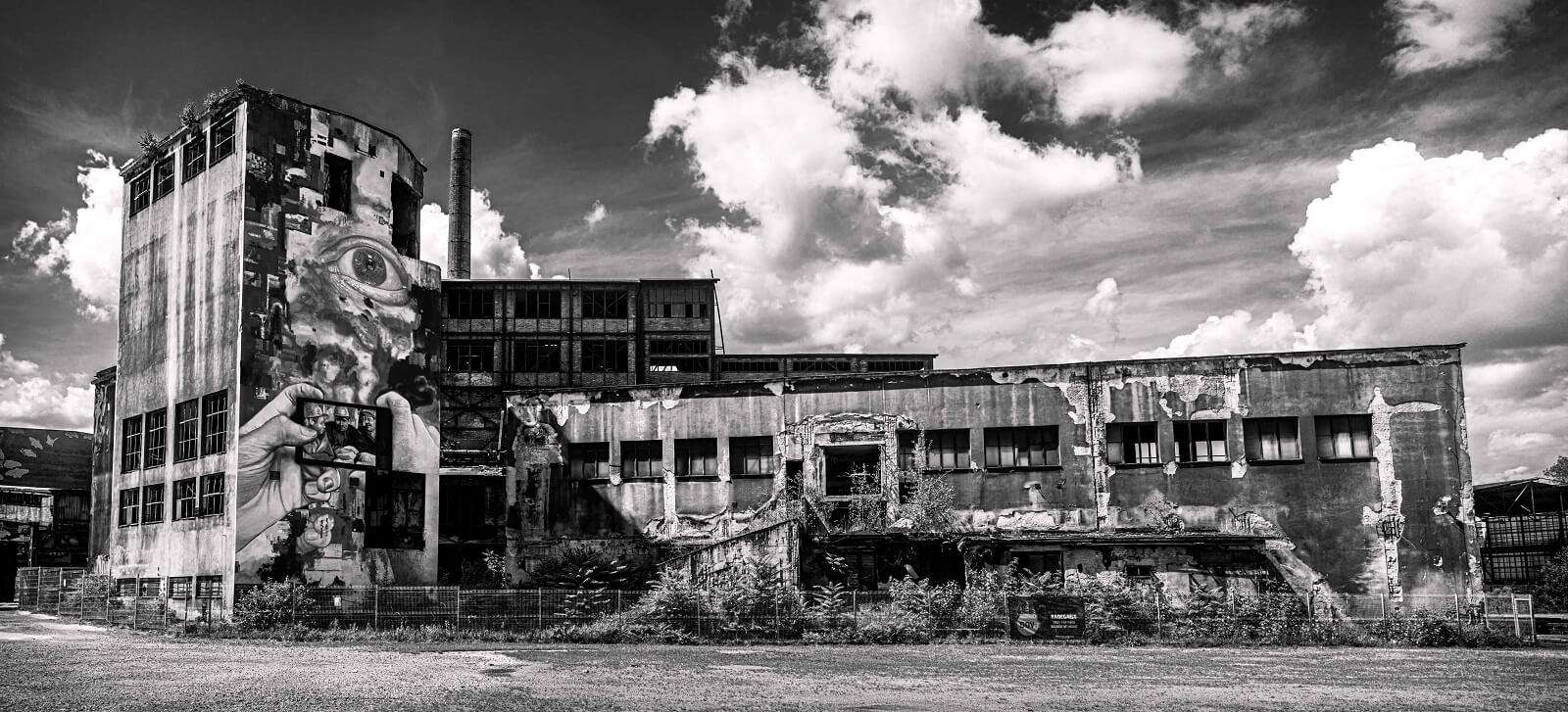Brief History of the Tippler and Grinding Mill
For several decades, the wagon tippler and the coal-grinding mill formed an essential part of the former industrial complex built in 1829, located in the Dolní Vítkovice district. More specifically, this equipment was part of the technologically connected Hlubina black coal mine, coking plant and blast furnace operations. It was seamlessly linked to the coarse coal sorting plant and the coking plant. The tippler and grinding mill thus formed major units within the coking plant’s coal service technology.
While the history of the structures is not fully known, it is documented that the first blast furnace using coke was in operation here as early as 1836. Over the years, the technology of blast furnace coke production changed several times; the preserved grinding mill and tippler are related to the last modernisation of the coking plant, completed during the 20th century.
In the archives of the Vítkovice company, dossiers were found documenting the construction work related to the buildings in 1949, 1951 and 1961. Although incomplete, they clearly show that the block underwent several construction stages.
The smaller, lower part of the current mill, with a rectangular floor plan, referred to as the “old grinder”, existed before 1949 according to the archives. The mills were used to grind coal, which was extracted not only from the nearby Hlubina mine, but also from other mines. In December 1952, a tippler was put into operation, which greatly facilitated the unloading of coal brought by railway. In the same year, a new mill was completed. The former Klement Gottwald Vítkovice Ironworks was the investor in each of the upgrading stages. The tippler had a capacity of about 8–10 wagons per hour. It appears that, before the site underwent refurbishment in 1964, during the tipping process whole wagons were tilted along with the railway track.
During the overhaul, the tippler was fundamentally redesigned. Coal was still transported only by hopper wagons, which allowed easy unloading of coal assisted by gravity. The unloaded coal fell through a grate into three concrete bins situated under the railway yard. From these underground pits, the concrete was transported by belt conveyors with three transfer stations to the top floor of the mill, more specifically, into two concrete hoppers above the hammer mills. The ground coal – with grain size of approx. 3 mm – fell by gravity on to the conveying machinery which transported it to bins, from which the ground coal was removed for further use in the coking plant. It was necessary to create the best mixture of coal types to achieve the optimum result for coking. After the closure in 1997, parts of the original buildings and equipment were removed, including the former suspended pouring station and steel bridges. As a result, the facilities have been preserved as fragments in a state of disrepair, with basements flooded with groundwater.
